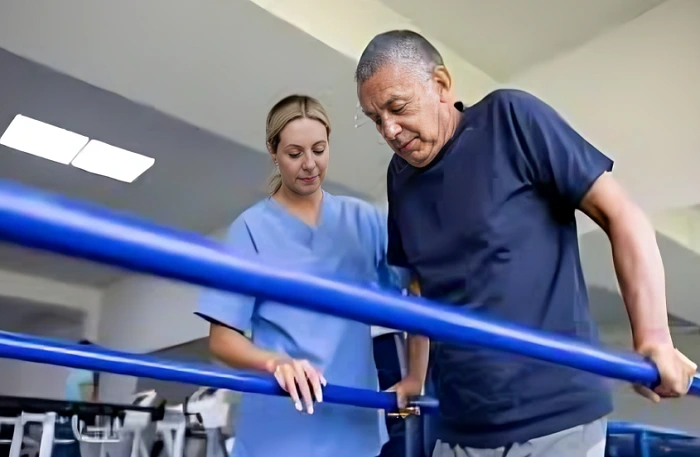A successful workplace is built on occupational health, which is more than simply a trendy term. The difficulties organizations have in guaranteeing the welfare of their employees change along with them.
Pureohs is a solution that aims to improve occupational health standards. By implementing more intelligent tactics, companies may improve productivity and provide safer surroundings.
We’ll look at occupational health’s definition, importance, typical hazards in different sectors, successful marketing techniques, and how technology is revolutionizing workplace safety in this post. Let’s explore Pureohs’ universe and see how you can change things right now.
Understanding Occupational Health
The main focus of occupational health is on the mental and physical health of people where they do their jobs. It includes a variety of procedures meant to stop diseases and injuries connected to the workplace.
Recognizing the different elements that influence employee health is essential to understanding this profession. These include hazardous material exposure, working environment, and ergonomic hazards related to certain jobs.
Establishing a secure environment where employees may flourish is the aim. This entails taking proactive steps to promote general well being in addition to reducing risks.
It is imperative that businesses raise their teams’ understanding of occupational health. Everyone can help uphold safety regulations and boost employee morale more successfully when they all recognize how important it is.
Importance of Occupational Health in the Workplace

For a workplace to be both safe and productive, occupational health is essential. Workers are more engaged and motivated in their jobs when they feel safe and well. Organizations that put occupational health first see a decrease in absenteeism.
Better team relationships and increased productivity are the results of fewer sick days. Putting money into workers’ well being raises morale. Employees who understand the importance of their health are more likely to be loyal to the business.
Putting occupational health first reduces workplace accidents. Early detection of possible risks enables businesses to take preventative action before problems develop.
In addition to protecting workers, this proactive strategy also saves companies from expensive legal disputes involving carelessness or hazardous working conditions.
Common Occupational Health Risks and Hazards
Risks and hazards related to occupational health are many and sometimes disregarded. Physical risks including trips, falls, and slips are present in many industries. If appropriate measures aren’t followed, these situations might result in significant injury.
Exposure to chemicals is another serious issue. Workers in factories or labs may come into contact with dangerous materials if they are not properly protected. Over time, this risk may lead to chronic illnesses as well as acute health problems.
Occupational health also heavily relies on psychological pressures. Workplace disagreements, heavy workloads, and deadline pressure can all lead to mental exhaustion and burnout.
Maintaining a healthy workplace requires addressing these issues. It’s also important to consider ergonomic risks. Musculoskeletal problems brought on by poorly designed workstations might eventually reduce productivity.
Frequent evaluations of work activities aid in the early detection of these dangers, opening the door for any required modifications or interventions. Fostering safer workplaces where employees feel appreciated and protected requires awareness of some prevalent threats.
Strategies for Promoting Occupational Health

Promoting occupational health necessitates a multidimensional strategy. First, it is crucial to cultivate a culture of safety. Encourage staff members to engage in safety initiatives and to raise concerns.
Training sessions may also be very important. Frequent ergonomics, stress management, and health awareness courses give employees the skills they need to be safe.
Putting wellness programs into action also has an impact. Think of mental health days that prioritize general well being or physical challenges. Frequent risk assessments are an additional successful tactic.
Maintaining a safer working environment is facilitated by identifying dangers before they become issues. Promoting workplace health also requires effective communication.
Keep the lines of communication open for comments and updates about any new employee safety rules or procedures. Encourage and praise your staff for good behavior. Positive reinforcement encourages people to put their personal health first while also making the workplace healthier overall.
The Role of Technology in Occupational Health
The field of occupational health is changing dramatically due to technology. Innovations in wearable technology and advanced software are improving worker safety and wellbeing.
Employees can keep an eye on their vital indicators in real time thanks to wearable technologies. This immediate input can help management and staff recognize any health problems before they become more serious.
Data analytics are essential for spotting patterns in occupational diseases and injuries. Businesses can apply the knowledge gained from this data to put specific preventative measures into place.
Telehealth programs have become useful resources for remotely resolving employee problems. Employee productivity is increased as they can get medical advice without having to make time consuming trips.
Employees can learn how to safely manage dangerous circumstances through immersive experiences provided by virtual reality training packages. Organizations may improve compliance and create a better work environment by using technology into occupational health policies.
Conclusion
Pureohs provides a thorough approach to occupational health that has the power to improve working conditions. Any firm must prioritize recognizing the significance of preserving employee well being.
Businesses may adopt more intelligent strategies that are suited to their unique requirements by recognizing possible risks and dangers. Occupational health procedures become even more effective and efficient when technology is used.
Better tracking, reporting, and administration of health programs are made possible by innovative solutions. This promotes a culture where safety is valued in addition to improving compliance.
better employee happiness, less absenteeism, and better productivity are anticipated outcomes for organizations that adopt Pureohs ideas. In today’s cutthroat business world, maintaining a healthy workplace is no longer an option, it is necessary for success.

